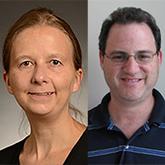Signaling Defects Discovered in Cells of People with Autism
Signaling Defects Discovered in Cells of People with Autism
Using cells stored in autism research repositories, scientists have identified specific molecular defects that disrupt communication pathways in the cells of people with autism. The research, published January 14 in Molecular Autism, identifies potential targets for new drug development. It also demonstrates that cells derived from blood samples can be valuable research tools for studying genetic changes that impact brain function.
The study, led by NARSAD 2013 Young Investigator Christina Gross, Ph.D., at Cincinnati Children's Hospital in collaboration with NARSAD 2012 Distinguished Investigator and 2009 Independent Investigator Gary J. Bassell, Ph.D., at Emory University School of Medicine, focused on a cellular communication network known as the PI3K/mTOR pathway, whose disfunction has been linked to autism spectrum disorder (ASD) in genetic studies. The pathway is essential in cells throughout the body, and influences several processes that are vital to the development and function of neurons. But it was not yet clear exactly how the PI3K/mTOR pathway mutations found in some autism patients disrupted cellular communications.
Dr. Gross and the team set out to learn more about these defects by studying them in blood cells. Collections of lymphoblastoid cells derived from the blood cells of individuals with autism are available to researchers through the Autism Genetic Resource Exchange and the Simons Simplex Collection.
For their study, the scientists examined specific components of the PI3K/mTOR pathway in lymphoblastoid cells derived from 58 individuals with autism spectrum disorders. They also performed the same analysis in lymphoblastoid cell lines derived from healthy siblings of 37 of the affected individuals.
Their research showed that in some affected individuals' cells, the PI3K enzyme was overactive, leading to inappropriate signaling “downstream” in the pathway and ultimately ramping up the synthesis of new proteins inside cells. The scientists were able to trace PI3K's overactivity to defects in a specific structural portion, or subunit, of the enzyme. Although further work is needed to assess the clinical relevance of the defect, the overactive enzyme subunit, which has also been found to be overactive in patients with schizophrenia, could be a useful molecular target for potential new therapies for ASD.



